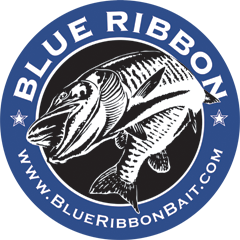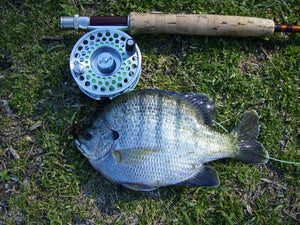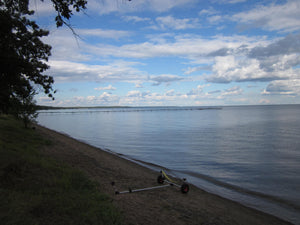Blog & Angler Education

Early Ice Fishing 0
Early ice can provide some of the best ice-fishing action around. The most important thing to remember when early ice fishing is to first check to make sure the ice is really safe. To review, the Minnesota DNR offers the following ice safety guidelines. The measurements here apply only to NEW, CLEAR SOLID ICE. White Ice, or "Snow Ice" is only about half as strong as new clear ice, so double the thickness guidelines when traveling on white ice.
2" or less: Stay off
4": Ice fishing or other activities on foot
5": Snowmobile or ATV
8"-12": Car or small pickup
12"-15": Medium Truck
Once you’re sure it's safe on your lake of choice, keep as quiet and still as possible once you get on the ice. Later in the season it’s a good idea to keep moving in search of active fish. But early in the season, if you know there are fish in the area, it’s often better to sit and wait for the fish to come to you. When the ice is still relatively thin, and especially when there’s no snow on it, the fish can easily see you moving around right above them. Fish that are spooked by such movement won’t be interested in eating. Many ice anglers choose to fish from a portable shelter, which can really assist in preventing the fish from seeing them.
In many bodies of water early in the season, anglers do a lot of sight fishing. It’s fun to watch the fish come up and look at your bait, then eat it. But if they're swimming away more often than they’re eating, you need to make some adjustments to your presentation.
If you know you’re going to be sight fishing, tie on some light line. Light line allows tiny baits to be presented more naturally, and it’s harder for the fish to see. More and more, anglers are turning to Trilene Fluorocarbon in two pound test for line-sensitive panfish. When the fish are finicky, small baits will usually work best. There's a greater selection of smaller baits and jigs available every year, and that’s because they catch fish.
So get your ice fishing gear ready, keep the above tips in mind, and get out there as soon as the ice is safe. Good luck!
- Josh Stevenson
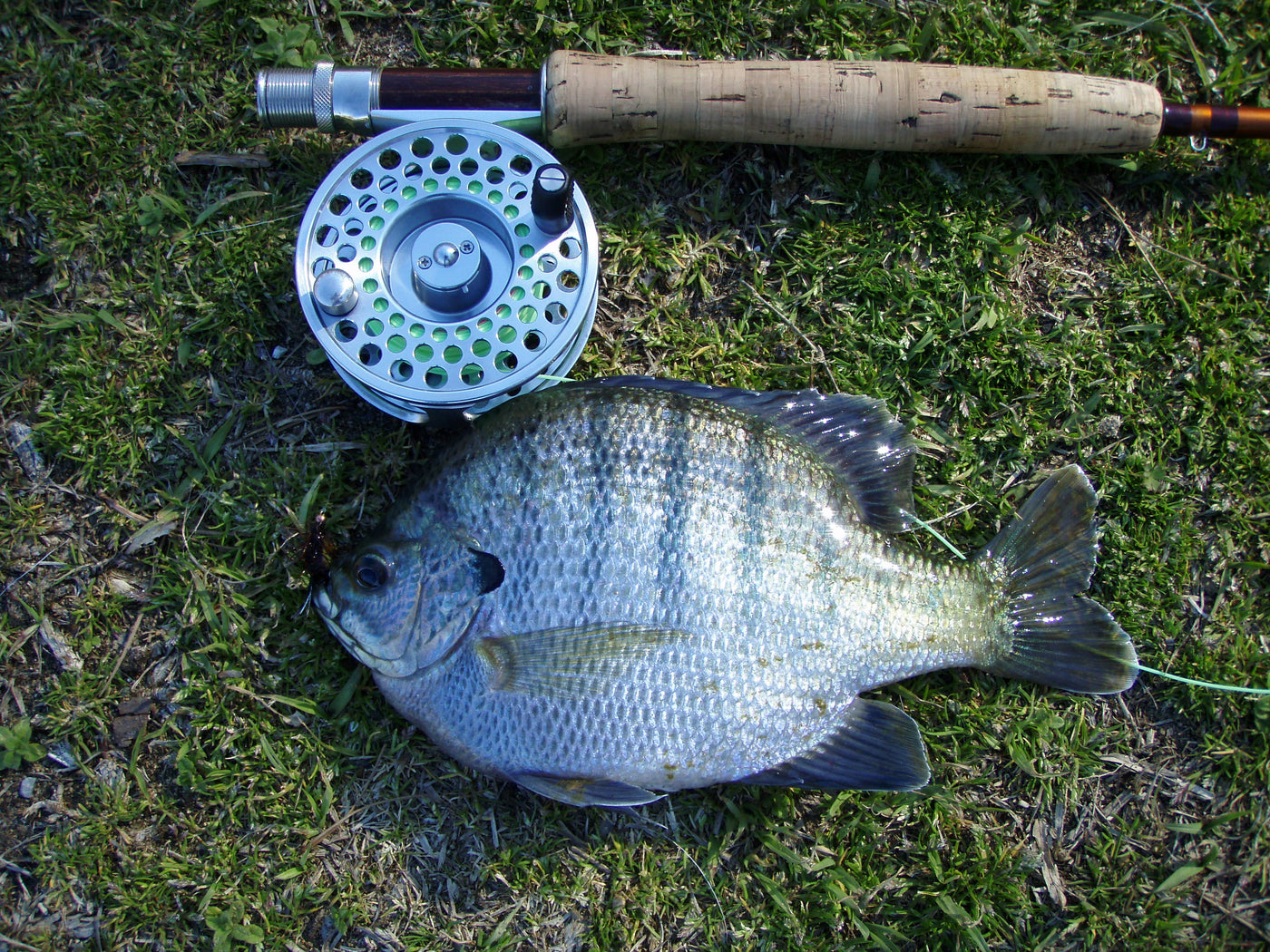
Panfish in the Fall 0
Fall is one of my favorite times of the year. It’s one of the best times to be fishing, especially for panfish. Many anglers tend to hang up their hats with the change in season. Some move on to hunting, and others just wait until ice season comes. Some of the best fishing of the year takes place during the fall months, and panfish can provide some of that action. All types of panfish go on an aggressive bite this time of year. If you’re looking for lots of action, as well as a fresh fish fry, panfish can provide both.
So often in the spring and summer months we see lots of bluegills and crappies around docks and shallow water vegetation. It would be easy to assume that’s where they live. But in the fall months most of the panfish will be a little deeper, especially the bigger ones. This is when your sonar equipment becomes a major factor in panfish-catching success.
Bluegills will be found along deep weedlines in the fall, and crappies can be located near the basin of the lake, often near the bottom, in twenty to thirty feet of water. And, at times, both will be found in the same areas at the same time. On a recent fishing trip I cruised deeper reefs for signs of life on the sonar. I didn’t stop to fish until I saw clusters of what I suspected to be panfish, and usually, they were. Once the panfish are located, the rest usually comes easy. Hover over them by anchoring, or troll over them with your electric motor. When the bite is on, it's unlikely your bait will reach the bottom before it gets hit.
Crappies will usually go for a bigger bait than bluegills. For one thing, crappies have a larger mouth. When the crappies and ‘gills are mixed together, I go with a sixteenth ounce Minni-Mite jig tipped with a 1” Gulp! Minnow or with a small minnow. A presentation this size is great for the crappies, and will also trigger the larger bluegills. You can also try tipping the jig with a wax worm but it has become apparent in most cases that the Gulp! and live minnow will catch more fish per bait than the wax worm. If most of the fish are bluegills, go with a smaller jig for more action.
This is the sort of fishing that appeals to almost any angler. Whether you are a kid or an adult, the fast action can be a lot of fun. So before you call it a season, try panfishing this fall. You’ll have the lake to yourself in many areas, and the fish will keep you entertained.
- Josh Stevenson
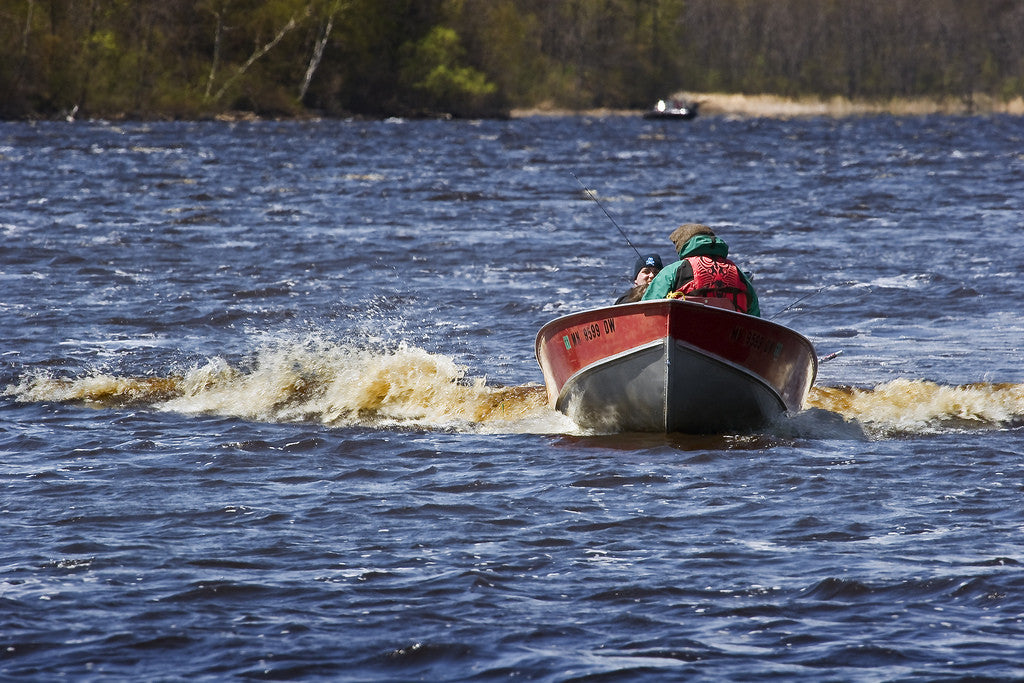
River Walleye: The Crankbait Effect 0
River walleye are constantly on the move. They move up river in fall and through the spring, and then migrate back down the river in preparation for the summer months. Even in rivers known to harbor “resident” fish, walleyes are constantly on the move in search of just the right current and feeding opportunities. A river is an environment of constant change. Water levels rise and drop, current goes up and down, and the abundance of forage is constantly changing. This could mean that where you found an ideal backwater or current break that was holding a ton of walleyes one day might be either a dry sandbar or a raging channel the next. That means the walleyes are constantly needing to move to find ideal feeding and resting areas. One of the best ways to locate these scattered fish is to cover water quickly with fast paced presentations such as casting crankbaits.
River Crankbait Technique
Casting crankbaits in a lake is not the same as casting crankbaits in a river. In a river it is important to keep your bait near the bottom because of the way the walleyes position themselves in relation to the current. The best way to locate walleyes, especially in the late summer and fall, is to find structure that offers forage, current, and cover. Wing dams are one of the best pieces of structure that will hold fish regularly. When I fish a wing dam, I generally will use a crankbait that dives anywhere from 3-8 feet below the surface mainly because I want the bait to dig and bounce off of the submerged rocks and timber. A few of my favorite crankbaits include the Rapala DT-6, Rapala Shad Rap, and the Storm Smash Shad. All of these baits produce a lot of vibration, which helps the walleyes locate the baits by using their lateral lines. Most of the time the walleyes will position themselves facing into the current on the front side of the wing dam. This gives them the best vantage point for seeing and picking off prey, so vibration and sound can play a key factor when trying to intercept fish. However, I always fish the entire wing dam (front, top, back, and tip) mainly because walleyes will utilize the entire piece of structure throughout a portion of the day.
River Crankbait Equipment
The typical setups that I will use when casting crankbaits on the river consist of a 7’0” medium power and moderate action bait casting rod paired with a 10 pound test braided line and also a 7’0” medium light power and fast action spinning rod paired with a 6 pound test braided line. With these two setups I am able to fish any sized crankbait that is needed for the situation I am fishing. The key to the setups I’m using is the small diameter braid that cuts through the water more efficiently than mono, which allows me to get a little more depth from my crankbait. Because the line is no-stretch, it’s also very sensitive, making it easy to feel the vibration of the lure and helps me detect if the bait picks up any debris, stops working, or got bit by a following predator.
Crankbaits play an important role in a serious walleye angler's tackle box. Used properly, crankbaits can be the best things to use in certain situations. So if you’re looking to put more and bigger fish in your boat this summer and fall, add a few crankbaits to your arsenal and be prepared to start catching quality fish.
- Josh Stevenson

Walleye Fishing: Slow or Fast Fall Rate? 0
When it comes to jig fishing, you have the option to add weight for a faster fall rate, or decrease the weight for a slower descent. How do you know when a slow or fast fall rate is best?
Working at Blue Ribbon Bait & Tackle, I have had the opportunity to talk with fishing guides and customers about how they feel about the fall rate of a jig. When looking through boxes that belong to walleye jig fishermen, such as Minnesota’s legendary guide, “The Griz,” you can see multiple sizes of jigs. Most people who jig for walleyes will have three main jigs in their box (1/8, 1/4 &, 3/8). Griz, however, has over 10 different sizes of walleye jigs. He is a strong believer in how the fall rate of a jig has more of a triggering aspect on a walleye than the color of the jig. Many people come into the shop and ask what color the fish have been biting on. But the color does not matter as much as the fall rate of the jig. On the Mississippi and the St. Croix River, Griz keeps only one color of jig in his box because he believes that the color is irrelevant, as long as the jig is falling at the rate of the baitfish.
My rule of thumb (of course there are always exceptions) regarding the weight and fall of a jig is to first consider water clarity. In clear water I want my bait to fall fast to get a reaction strike out of the fish. If the water is clear, walleyes and many other fish have enhanced visibility and you do not want to give the fish a chance to get a good look at the bait before he realizes what it is. In dirty and dingy water I like to have a slower fall rate because I want to give them a chance to locate it using their lateral lines in the dirty water. I start with this tactic and can usually work my way through my jigs to find the perfect jig for that particular fishing situation.
So if you're looking to enhance your jig collection, I'd first recommend adding a few different sizes, rather than a few different colors. That way you can hone in on the fall rate that works best for the particular water you're fishing.
- Josh Stevenson

Walleye Fishing on Mille Lacs Lake 0
When you head to Mille Lacs Lake, do you go in hopes of catching a few walleye and maybe enjoying a nice shore lunch, or do you dream of coming home with a picture of a monster musky? What does fishing this beautiful lake mean to you?
In the news this week is a lawsuit brought against the Minnesota DNR regarding its rules for Mille Lacs fishing. The non-partisan watchdog group PERM (Proper Economic Resource Management) is claiming that DNR mismanagement is to blame for the dwindling population of Mille Lacs walleye, and contends that the recent prohibition of night fishing (which applies between 10pm and 6am, from May 12 to Dec 1, instead of the usual three-week-long ban) tramples on our fishing heritage rights.
Fishermen know that when it comes to catching walleye on Mille Lacs, heading out during evening hours is usually rewarded with a hot bite. So, if the walleye numbers are dwindling (safe harvest numbers have fallen dramatically over the past 10 years), it makes sense that the DNR would deem those hours as the ones to limit as they work towards increasing the population.
PERM’s stance is that Minnesota's Preserve Hunting and Fishing Heritage constitutional amendment, passed in 1988, is being violated. An excerpt from that amendment (used from Dennis Anderson’s article Anglers, resort operators sue DNR over Mille Lacs walleye fishing rules reads “...hunting and fishing and the taking of game and fish are a valued part of our heritage that shall be forever preserved for the people and shall be managed by law and regulation for the public good.” And many argue that it’s the walleye that make Mille Lacs Lake a popular Minnesota fishing destination.
Not everyone believes walleye is the superstar species of Lake Mille Lacs, however. As WCCO TV Channel 4 reports in DNR Being Sued For Alleged 'Mismanagement' Of Lake Mille Lacs , PERM also contends that the DNR’s management strategy favors trophy fishing instead of walleye fishing. As we all know, it’s those sizeable musky, pike and small-mouth bass that give many other anglers a reason to head north with their baitcasters and cameras. And it’s those fresh water monsters that, while providing great stories and impressive photos, are feeding on more walleye.
The DNR has yet to legally respond to this lawsuit. What do you think they should do?
- Josh Stevenson
